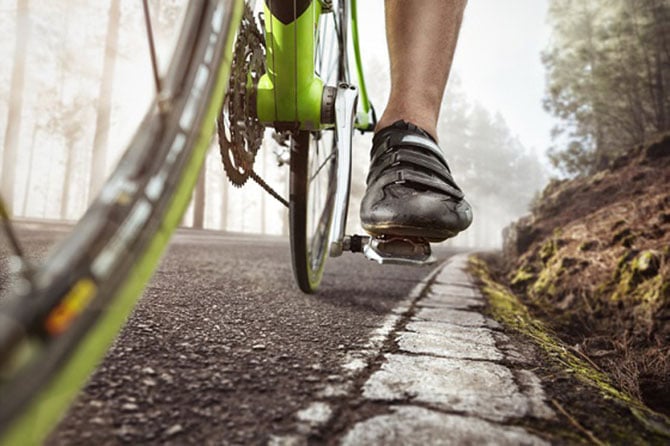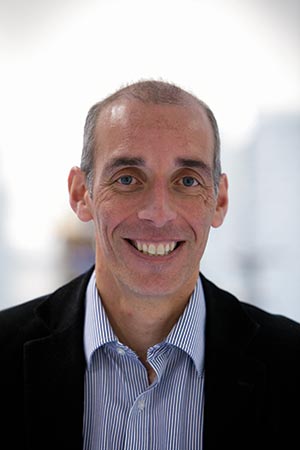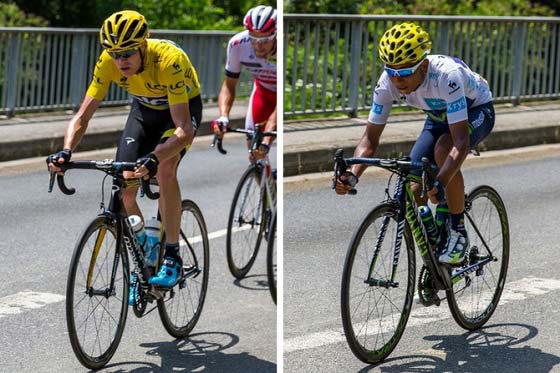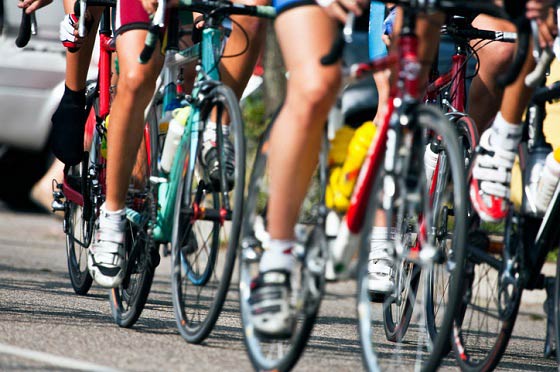The Optimal Pedalling Frequency
An interview with professional cyclist Louis Passfield

Chris Froome and Nairo Quintana are both outstanding professional cyclists - but they differ significantly in one point: their pedalling frequency. The British professional cyclist and training expert Prof. Dr. Louis Passfield explains in an interview how important this indicator is, whether there is an optimal value and how you can specifically train your pedalling frequency.
What does pedalling frequency mean?
In cycling, the term refers to the number of crank revolutions per minute. The pedalling frequency defines how often the crank turns 360° in one minute. The number of revolutions per minute is indicated by the abbreviation rpm. The faster a rider pedals, the higher the pedalling frequency.
However, there are several aspects that need to be considered for the optimal pedalling frequency, such as the length of the route, inclines, levels or slopes. For example, if you climb a mountain at maximum pedalling frequency, you may be tired prematurely due to excessive energy consumption and progress very slowly for the remainder of the route. In order to complete a distance as quickly as possible, the optimal ratio of effort and endurance, which indicates the pedalling frequency, is important. It is therefore much more difficult than one would assume to determine the optimum.
To remedy this, owayo asked the training expert Professor Louis Passfield the most important questions on the subject of optimal pedalling frequency. The surprising answers can be found here.
Is there an optimal pedalling frequency? Interview with Louis Passfield

Prof. Dr. Louis Passfield is one of the leading cycling experts worldwide. He was in charge of the preparations for the British cycling team for several world championships, the Commonwealth Games and the Olympic Games in 1992 (Barcelona), 1996 (Atlanta) and 2008 (Beijing). Today, Passfield teaches at the University of Kent; his research focuses on training, mentoring and high performance in cycling, especially pedalling frequency. On his Twitter he keeps his followers up to date with important research results.
owayo: Mr Passfield, you are one of the leading researchers on the subject of pedalling frequency. At the same time, you have been involved with the British cycling team at various tournaments and competitions in recent years, including the Olympic Games. In your experience, do scientific conclusions on pedalling frequency match actual sporting results? Prof. Dr. Louis Passfield: "I think the subject of pedalling frequency is an example in which the results of cyclists have actually been very relevant for a long time. Until the 1970s, research had argued that cyclists pedaled much faster than would have been considered efficient from a physiological or scientific perspective. However, even back then, researchers realised that they were over-simplifying the issue. My guess is that we do not yet fully understand how cyclists choose the right pedalling frequency for them and why it is often much higher than that which would be optimal from a physiological point of view".
Is there a direct link between pedalling frequency and performance? "Yes, I would even say there is a very important and good relationship between the two factors. Experienced cyclists are intuitively familiar with this. Inexperienced cyclists benefit from instruction that helps them find an effective pedalling frequency that maximises their performance. Most experienced cyclists know approximately where to find it. However, studies on optimal pedalling frequency investigate a much broader range of pedalling frequencies than any experienced cyclist would ever consider, and therefore research results are often much less accurate."

Chris Froome and Nairo Quintana are two modern examples of very different pedalling frequencies, both of which lead to success. While Froome produces a pedalling frequency of 100 rpm when climbing, Quintana works at 75 rpm under the same conditions. What are the advantages and disadvantages? "This is a question that is very difficult to answer scientifically. My guess is that the difference lies partly in the individual disposition of the riders, so Froome and Quintana have fundamentally different styles because they are physiologically different. However, I also suspect that both athletes have put a lot of work into their training to optimise their different styles. So there is no universal statement that works for everyone, and both show us that in a very nice way when we compare them. I think it might be a mistake to say that Quintana would be able to handle climbs better if he was cycling like Froome, or vice versa".
So you would argue that there is still no answer to the question of an optimal pedalling frequency? "Yes, as already indicated, I think it is a surprisingly complex subject from a scientific perspective. In fact, riders and trainers find their individual ideal through experience and intuition. While science can contribute to this process, we are still a long way from telling cyclists and trainers what they are doing wrong or that they should follow our advice."
Which factors can influence the pedalling frequency? "The speed or power you're trying to generate is probably the first factor. The second is how long your ride is. The optimal cadence for very high sprint performance is much higher than for riders who are doing endurance races at lower frequencies. A rider's efficiency, the length of his limbs, what type of muscle fibre he has, his own perception of his performance, and his overall experience, are all likely factors."
Does pedalling frequency also play a role for hobby cyclists? "Typically, hobby cyclists tend to pedal much slower than experienced cyclists. One reason might be that it is partly due to their fitness. Therefore I think that hobby cyclists improve their individual optimal pedalling frequency as their experience and fitness increase. Professional cyclists often 'train' by pedalling as fast as possible in a low gear. I think that could help an aspiring hobby cyclist. However, the main drive of a bike is the power generated by its rider. Whether he does it fast or slow is only secondary to how much power he generates. Therefore, it is first and foremost important to consider how fast you move and the amount of force you use. The pedalling frequency should only play a secondary role".
How can cyclists find the optimal pedalling frequency for their individual needs? "For this question, there is no specific laboratory test that I would recommend. We can use laboratory values and conjecture, but they won't be more valuable than having a conversation with an experienced cyclist or trainer first. For starters, I would recommend experimenting with different pedaling frequencies and finding out what feels right. So that you can train for a while and then work on it on the basis of your own perception of what works best for you individually. However, if you get a pedalling frequency that's beyond the usual values for most cyclists, say 80-105 rpm, it might be time to talk to someone with more experience."

Does it make sense to train the pedalling frequency? And if so, can you recommend certain exercises? "Yes, I'm pretty sure that most professional cyclists train their pedalling frequency, typically to feel more comfortable at a higher pedalling frequency. Roughly speaking, the fitter you are, the more power you can produce and the higher the pedalling frequency should be. In addition, you can ride longer with increasing fitness and benefit from a higher pedalling frequency. To endure this higher pedalling frequency does not necessarily happen in a natural way. Careful cycling in low gears and (slightly) flowing at the same time can probably help to find exactly the ideal frequency as training progresses."
We would like to thank Professor Louis Passfield for this VERY informative interview.
At a glance: Louis Passfields 3 Tips For Your Pedalling Frequency Training
In summary, Louis Passfield gives the following training tips for passionate hobby cyclists:
1. Experiment with different frequencies
Your optimal pedalling frequency can only be found by trial and error. Therefore, you should definitely pay attention to your own perception of what feels good for you individually! Find out how fast you progress with what effort and what your strength is sufficient for. Then you can work on your values on the basis of these results.
2. Pedalling at low speeds and creating fluid movements
Cycling in lower gears requires more effort. Pedalling with greater resistance is strenuous and trains your own fitness if you ride with endurance. How fast you manage to do this is only secondary, the most important thing is the demanding training with resistance.
3. Pedalling as quickly as possible in low gears
Once you've managed to make your movements as fluid as possible in low gears, you can start honing your pedalling frequency by trying to get faster. Again, be mindful of your own body and don't create frequencies that feel bad or exceed 80-105 rpm. [Editor's note: There are special devices designed to measure your pedalling frequency. We recommend asking your bicycle dealer for advice].
owayo also offers a large selection of cycling jerseys, which you can easily design yourself according to your wishes.
Photo credits: Title picture: © gettyimages/photoschmidt, Picture 1: © Louis Passfield (privat), Picture 2 (Chris Froome): © Wikimedia Commons, By Gyrostat (Wikimedia, CC-BY-SA 4.0), CC BY-SA 4.0, https://commons.wikimedia.org/w/index.php?curid=41869389, Picture 3 (Nairo Quintana): © Wikimedia Commons, By Gyrostat (Wikimedia, CC-BY-SA 4.0), CC BY-SA 4.0, https://commons.wikimedia.org/w/index.php?curid=41997024, Picture 4: © gettyimages/Claudio Arnese